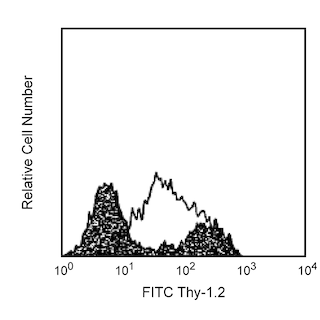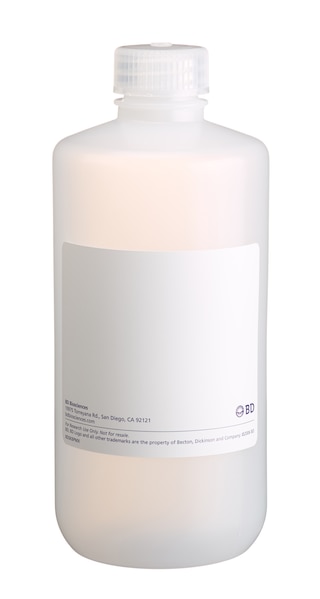-
抗体試薬
- フローサイトメトリー用試薬
-
ウェスタンブロッティング抗体試薬
- イムノアッセイ試薬
-
シングルセル試薬
- BD® AbSeq Assay
- BD Rhapsody™ Accessory Kits
- BD® OMICS-One Immune Profiler Protein Panel
- BD® Single-Cell Multiplexing Kit
- BD Rhapsody™ TCR/BCR Next Multiomic Assays
- BD Rhapsody™ Targeted mRNA Kits
- BD Rhapsody™ Whole Transcriptome Analysis (WTA) Amplification Kit
- BD® OMICS-Guard Sample Preservation Buffer
- BD Rhapsody™ ATAC-Seq Assays
- BD® OMICS-One Protein Panels
-
細胞機能評価のための試薬
-
顕微鏡・イメージング用試薬
-
細胞調製・分離試薬
-
- BD® AbSeq Assay
- BD Rhapsody™ Accessory Kits
- BD® OMICS-One Immune Profiler Protein Panel
- BD® Single-Cell Multiplexing Kit
- BD Rhapsody™ TCR/BCR Next Multiomic Assays
- BD Rhapsody™ Targeted mRNA Kits
- BD Rhapsody™ Whole Transcriptome Analysis (WTA) Amplification Kit
- BD® OMICS-Guard Sample Preservation Buffer
- BD Rhapsody™ ATAC-Seq Assays
- BD® OMICS-One Protein Panels
- Japan (Japanese)
-
Change country/language
Old Browser
Looks like you're visiting us from United States.
Would you like to stay on the current country site or be switched to your country?
BD Pharmingen™ APC Rat Anti-Mouse CD326
クローン G8.8 (RUO)

Two-color analysis of CD326 expression on mouse thymocytes and splenic T lymphocytes. BALB/c mouse thymocytes and splenic leucocytes were preincubated with Purified Rat Anti-Mouse CD16/CD32 antibody (Mouse BD Fc Block™) (Cat. No. 553141/553142) and stained with APC Rat IgG2a, κ Isotype Control (Cat. No. 554690) or APC Rat Anti-Mouse CD326 antibody (Cat. No. 563478).
Left Panel: Thymocytes were further stained with FITC Rat Anti-Mouse CD4 (553047/553046/561835) and PE Rat Anti-Mouse CD8a (553033/553032/561095) antibodies. The CD326 (solid line histogram) and Ig Isotype Control (dashed line histogram) fluorescence histograms were derived from CD4- and CD8-negative gated events with the forward and side light-scatter characteristics of viable thymocytes.
Middle and Right Panels: The splenic leucocytes were further stained with PE Hamster Anti-Mouse CD3e (Cat. No. 553064/553063/561824) and BD Horizon™ PE-CF594 Rat Anti-Mouse CD25 (Cat. No. 562694/562695) antibodies. Two-color flow cytometric dot plots show the correlated expression patterns of Ig Isotype control staining (Middle Panel) or CD326 (Right Panel) versus CD3e for CD25+ gated events with the forward and side light-scatter characteristics of viable splenic leucocytes. A small population of CD3+CD25+CD326+ cells were detected (Right Panel), whereas the CD25- T cells do not express detectable levels of CD326 (data not shown).
Flow cytometric analysis was performed using a BD™ LSR II Flow Cytometer System.

Two-color analysis of CD326 expression on mouse thymocytes and splenic T lymphocytes. BALB/c mouse thymocytes and splenic leucocytes were preincubated with Purified Rat Anti-Mouse CD16/CD32 antibody (Mouse BD Fc Block™) (Cat. No. 553141/553142) and stained with APC Rat IgG2a, κ Isotype Control (Cat. No. 554690) or APC Rat Anti-Mouse CD326 antibody (Cat. No. 563478).
Left Panel: Thymocytes were further stained with FITC Rat Anti-Mouse CD4 (553047/553046/561835) and PE Rat Anti-Mouse CD8a (553033/553032/561095) antibodies. The CD326 (solid line histogram) and Ig Isotype Control (dashed line histogram) fluorescence histograms were derived from CD4- and CD8-negative gated events with the forward and side light-scatter characteristics of viable thymocytes.
Middle and Right Panels: The splenic leucocytes were further stained with PE Hamster Anti-Mouse CD3e (Cat. No. 553064/553063/561824) and BD Horizon™ PE-CF594 Rat Anti-Mouse CD25 (Cat. No. 562694/562695) antibodies. Two-color flow cytometric dot plots show the correlated expression patterns of Ig Isotype control staining (Middle Panel) or CD326 (Right Panel) versus CD3e for CD25+ gated events with the forward and side light-scatter characteristics of viable splenic leucocytes. A small population of CD3+CD25+CD326+ cells were detected (Right Panel), whereas the CD25- T cells do not express detectable levels of CD326 (data not shown).
Flow cytometric analysis was performed using a BD™ LSR II Flow Cytometer System.

Two-color analysis of CD326 expression on mouse thymocytes and splenic T lymphocytes. BALB/c mouse thymocytes and splenic leucocytes were preincubated with Purified Rat Anti-Mouse CD16/CD32 antibody (Mouse BD Fc Block™) (Cat. No. 553141/553142) and stained with APC Rat IgG2a, κ Isotype Control (Cat. No. 554690) or APC Rat Anti-Mouse CD326 antibody (Cat. No. 563478).
Left Panel: Thymocytes were further stained with FITC Rat Anti-Mouse CD4 (553047/553046/561835) and PE Rat Anti-Mouse CD8a (553033/553032/561095) antibodies. The CD326 (solid line histogram) and Ig Isotype Control (dashed line histogram) fluorescence histograms were derived from CD4- and CD8-negative gated events with the forward and side light-scatter characteristics of viable thymocytes.
Middle and Right Panels: The splenic leucocytes were further stained with PE Hamster Anti-Mouse CD3e (Cat. No. 553064/553063/561824) and BD Horizon™ PE-CF594 Rat Anti-Mouse CD25 (Cat. No. 562694/562695) antibodies. Two-color flow cytometric dot plots show the correlated expression patterns of Ig Isotype control staining (Middle Panel) or CD326 (Right Panel) versus CD3e for CD25+ gated events with the forward and side light-scatter characteristics of viable splenic leucocytes. A small population of CD3+CD25+CD326+ cells were detected (Right Panel), whereas the CD25- T cells do not express detectable levels of CD326 (data not shown).
Flow cytometric analysis was performed using a BD™ LSR II Flow Cytometer System.

BD Pharmingen™ APC Rat Anti-Mouse CD326
Regulatory Statusの凡例
Any use of products other than the permitted use without the express written authorization of Becton, Dickinson and Company is strictly prohibited.
Preparation and Storage
Product Notices
- This reagent has been pre-diluted for use at the recommended Volume per Test. We typically use 1 × 10^6 cells in a 100-µl experimental sample (a test).
- An isotype control should be used at the same concentration as the antibody of interest.
- Caution: Sodium azide yields highly toxic hydrazoic acid under acidic conditions. Dilute azide compounds in running water before discarding to avoid accumulation of potentially explosive deposits in plumbing.
- This APC-conjugated reagent can be used in any flow cytometer equipped with a dye, HeNe, or red diode laser.
- CF™ is a trademark of Biotium, Inc.
- For fluorochrome spectra and suitable instrument settings, please refer to our Multicolor Flow Cytometry web page at www.bdbiosciences.com/colors.
- Please refer to www.bdbiosciences.com/us/s/resources for technical protocols.
関連製品




.png?imwidth=320)
.png?imwidth=320)
最近閲覧済み
The G8.8 monoclonal antibody recognizes CD326/Ep-CAM (Epithelial Cell Adhesion Molecule), also known as gp40 in the mouse and by a variety of names (including GA733-2, CO17-1A, and EGP) in the human. In the mouse, Ep-CAM is a 40-42 kDa cell-surface type 1 transmembrane glycoprotein expressed on thymic epithelial cells, thymic dendritic cells, immature thymocytes, a small subset of peripheral T lymphocytes, intestinal epithelium, kidney-collecting tubule epithelium, keratinocytes, Langerhans cells and lymph node and splenic dendritic cells. Profiles of Ep-CAM expression on fetal thymocytes and on the CD4[-] CD8[-], CD4[+] CD8[+], CD4[-] CD8[+], and CD4[+] CD8[-] subsets of adult thymocytes have been published. In unrelated studies, mouse Ep-CAM mRNA was detected in tissues containing epithelial cells (kidney, stomach, intestine, lung, and thymus) and in plasma cells and plasmacytomas, but not in heart, muscle, liver, brain, spleen, B lymphomas, or pre-B lymphomas. Ep-CAM is a Ca[2+] independent homophilic adhesion molecule that is proposed to play roles in the development and normal function of epithelial tissues and in the progression of carcinomas.

Development References (9)
-
Basak S, Speicher D, Eck S, Wunner W. Colorectal carcinoma invasion inhibition by CO17-1A/GA733 antigen and its murine homologue. J Natl Cancer Inst. 1998; 90(9):691-697. (Biology). View Reference
-
Bergsagel PL, Victor-Kobrin C, Timblin CR, Trepel J, Kuehl WM. A murine cDNA encodes a pan-epithelial glycoprotein that is also expressed on plasma cells. J Immunol. 1992; 148(2):590-596. (Biology). View Reference
-
Birebent B, Somasundaram R, Purev E. Anti-idiotypic antibody and recombinant antigen vaccines in colorectal cancer patients. Crit Rev Oncol Hematol. 2001; 39((1-2)):107-113. (Biology). View Reference
-
Borkowski TA, Nelson AJ, Farr AG, Udey MC. Expression of gp40, the murine homologue of human epithelial cell adhesion molecule (Ep-CAM), by murine dendritic cells. Eur J Immunol. 1996; 26(1):110-114. (Clone-specific: Immunohistochemistry). View Reference
-
Farr A, Nelson A, Truex J, Hosier S. Epithelial heterogeneity in the murine thymus: a cell surface glycoprotein expressed by subcapsular and medullary epithelium. J Histochem Cytochem. 1991; 39(5):345-353. (Immunogen: Electron microscopy, Immunohistochemistry, Immunoprecipitation). View Reference
-
Litvinov SV, Balzar M, Winter MJ. Epithelial cell adhesion molecule (Ep-CAM) modulates cell-cell interactions mediated by classic cadherins. J Biol Chem. 1997; 139(5):1337-1348. (Biology). View Reference
-
Nelson AJ, Dunn RJ, Peach R, Aruffo A, Farr AG. The murine homolog of human Ep-CAM, a homotypic adhesion molecule, is expressed by thymocytes and thymic epithelial cells. Eur J Immunol. 1996; 26(2):401-408. (Clone-specific: Electron microscopy, Immunohistochemistry, Immunoprecipitation). View Reference
-
Taguchi N, Hashimoto Y, Naiki M. Abnormal thymic expression of epithelial cell adhesion molecule (EP-CAM) in New Zealand Black (NZB) mice. J Autoimmun. 1999; 13(4):393-400. (Clone-specific: Electron microscopy). View Reference
-
Zutter MM. Gastrointestinal carcinoma antigen GA733: target for immunodestruction and potential modifier of invasiveness and chemoresponsiveness. J Natl Cancer Inst. 1998; 90(9):642-644. (Biology). View Reference
Please refer to Support Documents for Quality Certificates
Global - Refer to manufacturer's instructions for use and related User Manuals and Technical data sheets before using this products as described
Comparisons, where applicable, are made against older BD Technology, manual methods or are general performance claims. Comparisons are not made against non-BD technologies, unless otherwise noted.
For Research Use Only. Not for use in diagnostic or therapeutic procedures.
